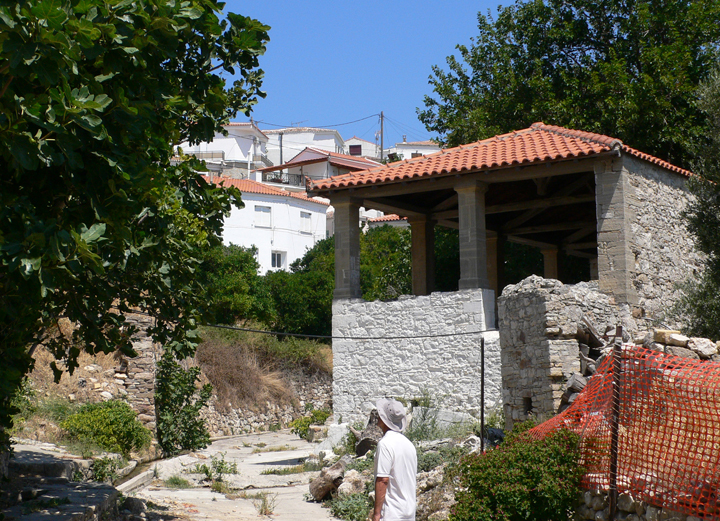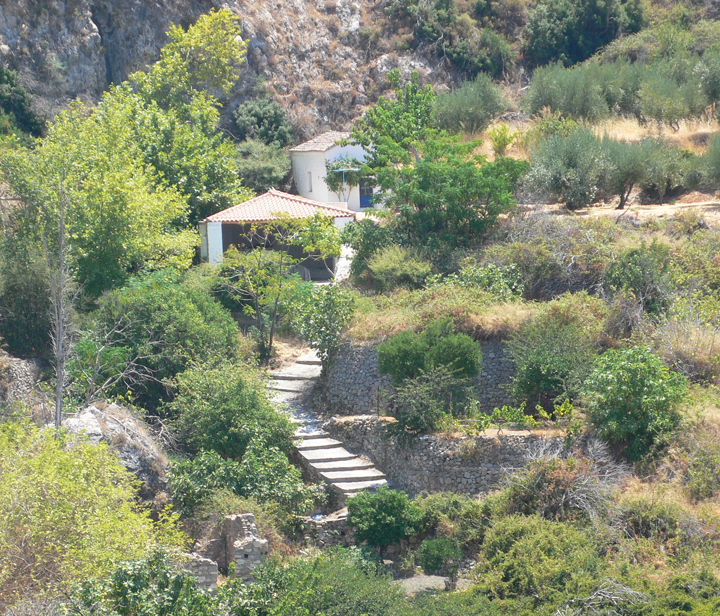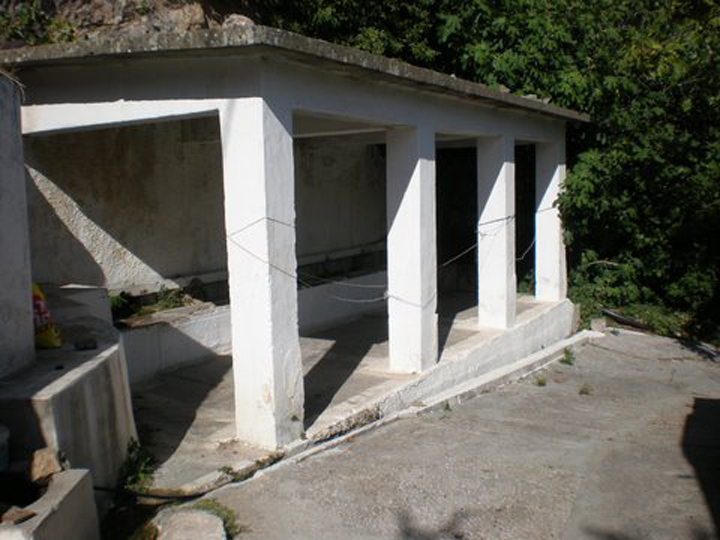Village Laundries
Until very recently, the women in the Amfilissos villages, Koumeika, Skoureika and Neochori would meet in the village’s communal laundry, to wash their families’ clothes in the clear water from the Amfilissos streams that was diverted to flow through each laundry. At the same time, they would exchange stories, particularly those which they did not wish to tell (or tell in the same way) in the presence of men.
During the German occupation of Samos in the Second World War, women would exchange messages, and sometimes even weapons, hidden in the bundles of clothes that they took to and from the laundries under the omnipresent surveillance of the occupiers, which did not extend the laundry buiildings’ interiors. In more recent times, young people of both sexes would use the laundries to engage in behaviour, and to swap stories, that they did not want the older generation to know about, without the pretext of laundering clothes.
Thus, the laundries played a important and complex role as nodes, at both the physical and social levels, in the Amfilissos Area Flow Grid. Each of the three Laundry buildings is still intact and is still supplied with water from an Amfilissos stream, but all laundry in the Amfilissos villages is now done by women working individually: washing their clothes alone in their homes. Thus the function of the communal laundries as nodes for exchanges of stories between women has been lost, and not replaced, through the technologial progress that has resulted in the ubiquity of home-based individual washing machines. In order to stimulate new social processes, in which these laundries can be centrally involved, we plan an Amfilissos Area Project that aims to reclaim and develop the collective story-telling and recreational functions that the laundry buildings once hosted, so that they can become “collective story-laundries”.
Each communal laundry was built in a location with strategic significance in relation to in the original (male dominated) public space of the village, athough the particular signicance of the laundry’s location (see pictures below) is different for each village.
In Koumeika. the communal laundry was located close to the village square, where the men met in their Kafeneon, but it was placed just out of their sight, alongside the stream that flows under the square.
Koumeika Laundry: Exterior
In Skoureira, the communal Laundry was located on the far side of the ravine marking the Eastern boundary of the village: facing the village, but separated from it by the stream flowing through the ravine
Skoureika Laundry: viewed across the valley from the village.
In Neochori, the communal laundry was located on the village boundary, turning its back on the public space of the village, to face across the valley.
Neochori Laundry